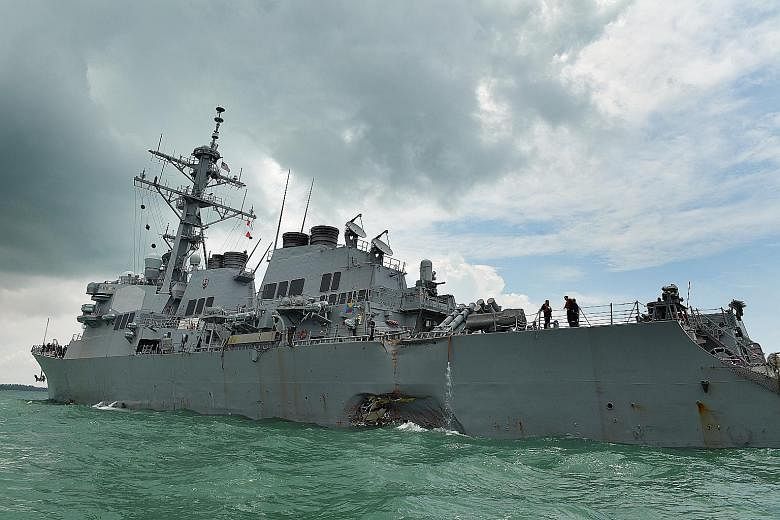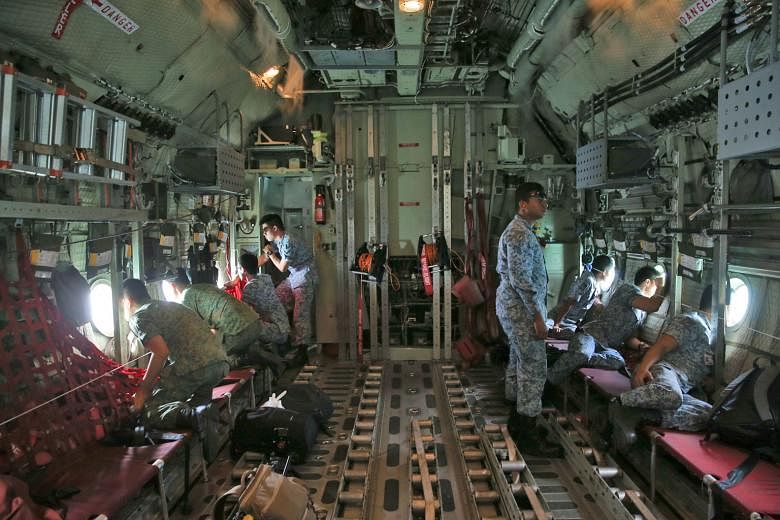Collision of US vessel with tanker
An American naval destroyer with advanced navigational systems on board would be expected to traverse safely in one of the world's busiest but also most monitored waterways.
But on Aug 21, many were shocked to hear that United States missile-guided destroyer USS John S. McCain had collided with Liberian-flagged oil tanker Alnic MC in the Singapore Strait. The incident resulted in the death of 10 US sailors and was one of the worst naval accidents ever to occur in Singapore waters.
The collision, the fourth and deadliest incident involving a US warship in Asian waters this year, left more than a gaping hole in the hull. It ignited a series of questions, from how it could have been avoided, to larger issues of US credibility in the region.
The incident at 5.24am sparked an 80-hour, five-nation search for 10 missing sailors that, at one point, covered a sea area of 5,524 sq km - more than seven times Singapore's size.
Anxious families prayed for more than three days before the search ended, with the focus shifting to finding the sailors in the ship, where their bodies were later discovered.
As the vessel was part of the 7th Fleet that has played a pivotal role in maintaining security and stability in the region since World War II, some commentators said the incident punctured the aura of the US Navy's strength, especially as the same destroyer was involved in a patrol to challenge Beijing's territorial claims in the South China Sea about two weeks earlier. The fleet, headquartered in Yokosuka, Japan, enforces the Americans' regional protector role by operating around 70 ships in the western Pacific Ocean, including the US Navy's only forward-deployed aircraft carrier.
In an interview in October, the new commander of the US 7th Fleet, Vice-Admiral Phil Sawyer, said the operational demands on the fleet were so heavy that not enough emphasis was placed on crew preparation and training. His predecessor Joseph Aucoin was sacked, together with the ship's commanding and executive officers.
The US chief of naval operations announced a comprehensive review of the fleet, aimed at assessing its culture, operations and readiness for missions. Inadequate preparation and poor decisions were suggested as contributory causes of the incident in a report two months later.
Concerns about navigational safety in one of the world's busiest waterways were also brought up when the Maritime and Port Authority revealed that only the Alnic MC was picked up by its Vessel Traffic Information System (VTIS), which monitors ships by means of radar as well as their Automatic Identification System (AIS) signals.
Singapore's Transport Safety Investigation Bureau later revealed it had reviewed the recordings and established that the MPA's VTIS "held" both vessels on MPA's radar. But while the VTIS also received Alnic MC's AIS signal, it did not receive any AIS signal from the US warship.
The ship left on Oct 5 for Yokosuka, while an investigation by the bureau is ongoing.



